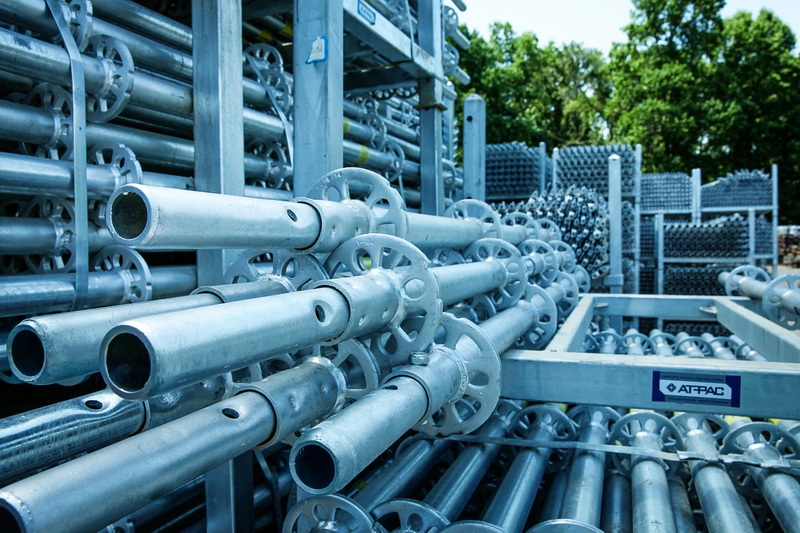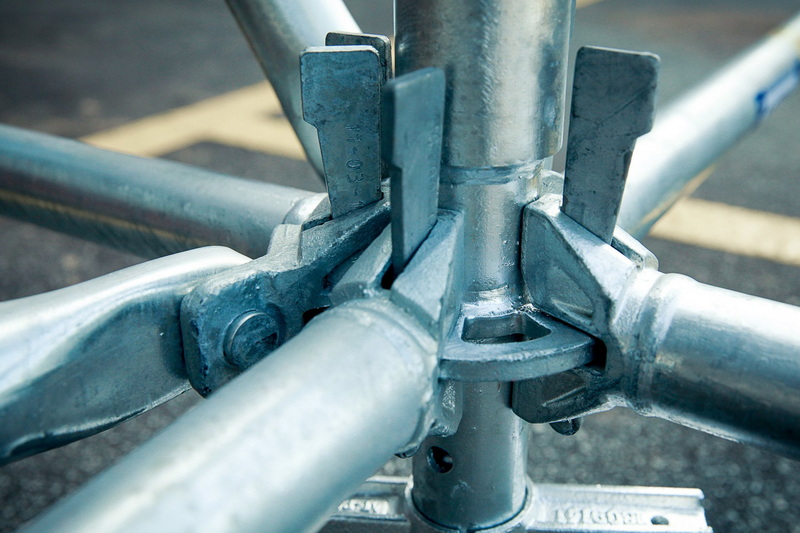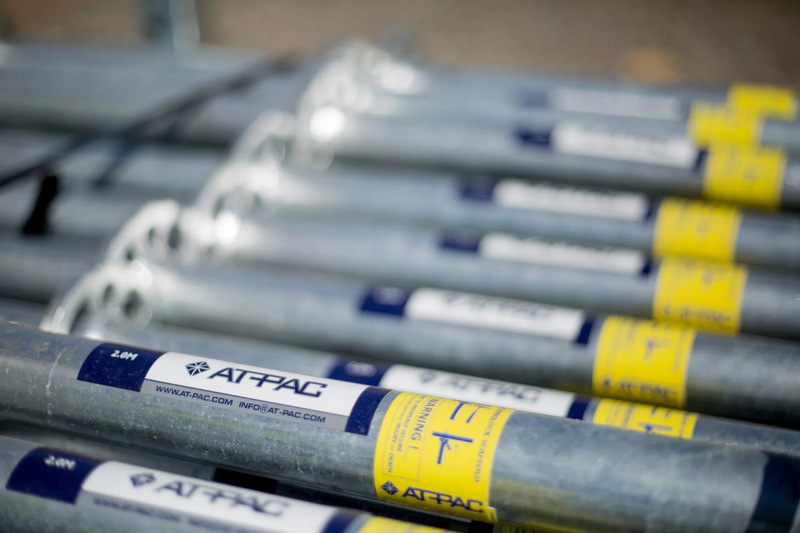Content Menu
● Understanding the Safety Challenges in Scaffolding
● Key Features of ATPAC System Scaffolding that Enhance Safety
>> 1. Integrated Fall Protection
>> 2. Secure Locking Mechanisms
>> 3. Stable and Level Platforms
>> 4. High Load-Bearing Capacity
>> 5. Simplified Assembly
>> 6. Durable Materials
>> 7. Compliance with Safety Standards
● How ATPAC System Scaffolding Minimizes Common Scaffolding Hazards
>> 1. Preventing Falls from Height
>> 2. Reducing Instability
>> 3. Minimizing Material Handling Hazards
>> 4. Simplifying Assembly and Reducing Errors
>> 5. Ensuring Consistent Safety and Performance
● Case Studies: ATPAC System Scaffolding Improving Job Site Safety
>> 1. High-Rise Construction Project in New York City
>> 2. Bridge Maintenance Project in San Francisco
>> 3. Industrial Plant Renovation in Houston
● The Role of Training and Inspection in Maintaining Scaffolding Safety
>> 1. Comprehensive Training Programs
>> 2. Regular Inspections
>> 3. Qualified Personnel
>> 4. Documentation and Record Keeping
● Conclusion
● FAQ
>> 1. How does ATPAC System Scaffolding's integrated fall protection enhance safety?
>> 2. What types of projects are best suited for ATPAC System Scaffolding?
>> 3. How easy is it to assemble and disassemble ATPAC System Scaffolding?
>> 4. What are the key maintenance requirements for ATPAC System Scaffolding?
>> 5. How does ATPAC System Scaffolding comply with safety standards?
● Citations:
Safety on construction and maintenance job sites is paramount. Choosing the right scaffolding system is critical for minimizing risks and ensuring the well-being of workers. The ATPAC System Scaffolding is engineered with safety as a top priority, incorporating a range of innovative features that significantly reduce the likelihood of accidents. This article explores the specific ways in which ATPAC system scaffolding enhances safety on job sites, examining its design, components, and operational advantages.

Understanding the Safety Challenges in Scaffolding
Before delving into the specifics of ATPAC system scaffolding, it's important to understand the common safety challenges associated with traditional scaffolding methods. These challenges include:
- Instability: Traditional scaffolding can be prone to instability due to improper assembly, inadequate bracing, or uneven ground conditions.
- Falls from Height: Falls from height are a leading cause of injuries and fatalities on construction sites. Traditional scaffolding often lacks adequate fall protection measures.
- Material Handling Hazards: Moving materials up and down traditional scaffolding can be hazardous, with risks of dropped objects and worker strain.
- Complexity of Assembly: Traditional scaffolding systems can be complex and time-consuming to assemble, increasing the risk of errors and instability.
- Lack of Standardization: The lack of standardization in traditional scaffolding can lead to inconsistencies in safety and performance.
Key Features of ATPAC System Scaffolding that Enhance Safety
The ATPAC System Scaffolding addresses these safety challenges through a combination of innovative design features and robust construction:
1. Integrated Fall Protection
The ATPAC System Scaffolding includes integrated fall protection measures, such as guardrails, mid-rails, and toe boards, to prevent falls from height. These safety barriers are designed to meet or exceed industry standards and provide a secure working environment for construction and maintenance personnel.
2. Secure Locking Mechanisms
ATPAC system scaffolding features secure locking mechanisms that ensure components are firmly connected, minimizing the risk of accidental disconnections or collapses. These mechanisms are easy to use, reducing the potential for assembly errors.
3. Stable and Level Platforms
The ATPAC system is designed to provide stable and level platforms, even on uneven ground conditions. Adjustable base plates and leveling devices help to ensure that the scaffolding is properly aligned and supported.
4. High Load-Bearing Capacity
ATPAC system scaffolding is engineered to support heavy loads, providing a safe and reliable platform for workers, tools, and materials. The system's high load-bearing capacity reduces the risk of overloading and structural failure.
5. Simplified Assembly
The ATPAC System Scaffolding is designed for quick and easy assembly, reducing the potential for errors and instability. The system's modular components fit together seamlessly, minimizing the need for specialized tools or training.
6. Durable Materials
ATPAC system scaffolding is constructed from high-quality, durable materials that are designed to withstand the rigors of the construction environment. The system's corrosion-resistant coatings help to protect against rust and degradation, ensuring long-term safety and reliability.
7. Compliance with Safety Standards
ATPAC system scaffolding is designed and manufactured to comply with relevant safety standards and regulations, such as OSHA and ANSI. This ensures that the system meets or exceeds the minimum requirements for safety and performance.

How ATPAC System Scaffolding Minimizes Common Scaffolding Hazards
1. Preventing Falls from Height
ATPAC system scaffolding's integrated fall protection measures, such as guardrails and toe boards, effectively prevent falls from height. These safety barriers provide a secure working environment, reducing the risk of injuries and fatalities.
2. Reducing Instability
ATPAC system scaffolding's stable and level platforms, secure locking mechanisms, and adjustable base plates minimize the risk of instability. These features ensure that the scaffolding remains firmly in place, even on uneven ground conditions.
3. Minimizing Material Handling Hazards
ATPAC system scaffolding can be equipped with material lifts and other accessories to minimize material handling hazards. These accessories help to safely and efficiently move materials up and down the scaffolding, reducing the risk of dropped objects and worker strain.
4. Simplifying Assembly and Reducing Errors
ATPAC system scaffolding's simplified assembly process reduces the potential for errors and instability. The system's modular components fit together seamlessly, minimizing the need for specialized tools or training.
5. Ensuring Consistent Safety and Performance
ATPAC system scaffolding's standardized design and compliance with safety standards ensure consistent safety and performance across all applications. This reduces the risk of inconsistencies and helps to create a safer working environment.
Case Studies: ATPAC System Scaffolding Improving Job Site Safety
1. High-Rise Construction Project in New York City
In the construction of a 50-story office tower in New York City, ATPAC system scaffolding was used to provide access for facade installation. The system's integrated fall protection measures and stable platforms helped to prevent falls and injuries, resulting in a safe and efficient project.
2. Bridge Maintenance Project in San Francisco
ATPAC system scaffolding was used to facilitate repairs on the Golden Gate Bridge in San Francisco. The system's versatility and adaptability allowed workers to access difficult-to-reach areas and complete the project on time and within budget, all while maintaining a high level of safety.
3. Industrial Plant Renovation in Houston
An ATPAC system scaffolding was deployed for the renovation of a chemical processing plant in Houston. The system's chemical resistance and safety features were critical in ensuring worker safety in the corrosive environment. The robust construction and secure locking mechanisms minimized the risk of accidents.
The Role of Training and Inspection in Maintaining Scaffolding Safety
While ATPAC System Scaffolding offers significant safety advantages, it is essential to emphasize the importance of proper training and regular inspections. Even the safest scaffolding system can become hazardous if not used correctly or maintained adequately.
1. Comprehensive Training Programs
Provide comprehensive training programs for all workers who will be involved in assembling, using, or dismantling the scaffolding system. These programs should cover the proper procedures for each task, as well as potential hazards and how to mitigate them.
2. Regular Inspections
Conduct regular inspections of the ATPAC System Scaffolding to identify any signs of damage, wear, or instability. Inspections should be carried out before each shift and after any event that could affect the scaffolding's structural integrity, such as a storm or impact.
3. Qualified Personnel
Ensure that all scaffolding work is performed by qualified and experienced personnel who have the necessary skills and knowledge to do the job safely.
4. Documentation and Record Keeping
Maintain detailed records of all training sessions, inspections, and maintenance activities. This documentation can be used to track the performance of the scaffolding system and identify areas for improvement.
Conclusion
ATPAC System Scaffolding offers a significant improvement in job site safety compared to traditional scaffolding methods. Its integrated fall protection, secure locking mechanisms, stable platforms, and simplified assembly process all contribute to a safer working environment. By investing in ATPAC system scaffolding and prioritizing proper training and inspection, construction and maintenance companies can minimize the risk of accidents and ensure the well-being of their workers. In an industry where safety is paramount, the ATPAC system stands out as a reliable and effective solution for creating a secure work-at-height environment.

FAQ
1. How does ATPAC System Scaffolding's integrated fall protection enhance safety?
The integrated fall protection measures, such as guardrails and toe boards, provide a physical barrier that prevents workers from falling from height. This reduces the risk of injuries and fatalities on the job site.
2. What types of projects are best suited for ATPAC System Scaffolding?
ATPAC System Scaffolding is versatile and can be used in a wide range of projects, including high-rise construction, bridge maintenance, industrial plant renovations, and commercial building construction.
3. How easy is it to assemble and disassemble ATPAC System Scaffolding?
ATPAC System Scaffolding is designed for quick and easy assembly and disassembly. The system's modular components fit together seamlessly, minimizing the need for specialized tools or training.
4. What are the key maintenance requirements for ATPAC System Scaffolding?
The key maintenance requirements for ATPAC System Scaffolding include regular inspections, cleaning, and lubrication of moving parts. Any damaged or worn components should be replaced immediately.
5. How does ATPAC System Scaffolding comply with safety standards?
ATPAC System Scaffolding is designed and manufactured to comply with relevant safety standards and regulations, such as OSHA and ANSI. The system is tested and certified to meet or exceed these requirements.
Citations:
[1] https://pplx-res.cloudinary.com/image/upload/v1740571215/user_uploads/CeSuPcovqtdMSCe/image.jpg
[2] https://pplx-res.cloudinary.com/image/upload/v1740571215/user_uploads/rblRsdJYvqCaenH/image.jpg






















